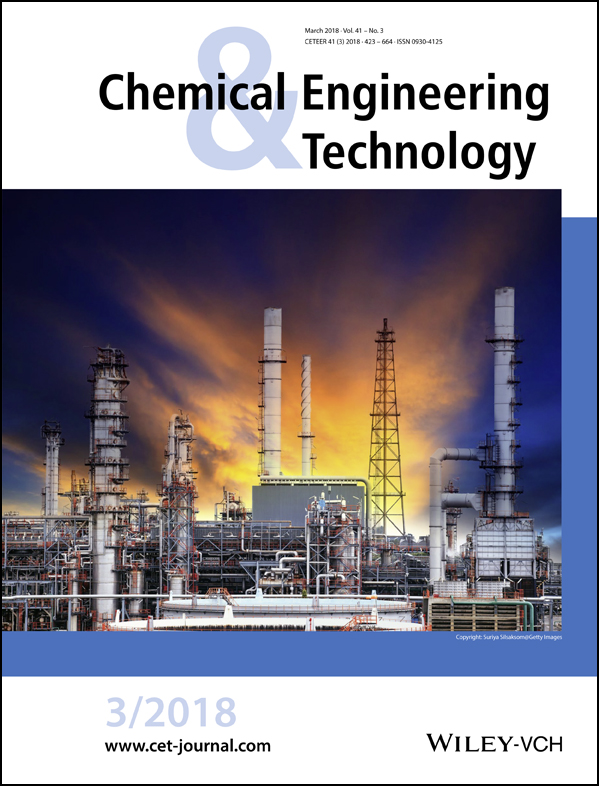Power Generation from Coke Oven Gas Using Chemical Looping Combustion: Thermodynamic Simulation
Corresponding Author
Ming Luo
Jiangsu University, School of Energy and Power Engineering, 301 Xuefu Road, 212013 Zhenjiang, China
Correspondence: Ming Luo ([email protected]), Jiangsu University, School of Energy and Power Engineering, 301 Xuefu Road, 212013 Zhenjiang, China.Search for more papers by this authorChao Wang
Jiangsu University, School of Energy and Power Engineering, 301 Xuefu Road, 212013 Zhenjiang, China
Search for more papers by this authorYang Yi
Jiangsu University, School of Energy and Power Engineering, 301 Xuefu Road, 212013 Zhenjiang, China
Search for more papers by this authorKe Liu
State Grid Shandong Electric Power Research Institute, 2000 Wangyue Road, 250003 Jinan, China
Search for more papers by this authorJianjun Cai
Xi'an Jiaotong University, Key Laboratory of Thermo-Fluid Science and Engineering of MOE, School of Energy and Power Engineering, 28 Xianning West Road, 710049 Xi'an, China
Search for more papers by this authorQian Wang
Jiangsu University, School of Energy and Power Engineering, 301 Xuefu Road, 212013 Zhenjiang, China
Search for more papers by this authorCorresponding Author
Ming Luo
Jiangsu University, School of Energy and Power Engineering, 301 Xuefu Road, 212013 Zhenjiang, China
Correspondence: Ming Luo ([email protected]), Jiangsu University, School of Energy and Power Engineering, 301 Xuefu Road, 212013 Zhenjiang, China.Search for more papers by this authorChao Wang
Jiangsu University, School of Energy and Power Engineering, 301 Xuefu Road, 212013 Zhenjiang, China
Search for more papers by this authorYang Yi
Jiangsu University, School of Energy and Power Engineering, 301 Xuefu Road, 212013 Zhenjiang, China
Search for more papers by this authorKe Liu
State Grid Shandong Electric Power Research Institute, 2000 Wangyue Road, 250003 Jinan, China
Search for more papers by this authorJianjun Cai
Xi'an Jiaotong University, Key Laboratory of Thermo-Fluid Science and Engineering of MOE, School of Energy and Power Engineering, 28 Xianning West Road, 710049 Xi'an, China
Search for more papers by this authorQian Wang
Jiangsu University, School of Energy and Power Engineering, 301 Xuefu Road, 212013 Zhenjiang, China
Search for more papers by this authorAbstract
A chemical looping combustion (CLC) combined cycle with coke oven gas as fuel and NiO/NiAl2O4 as an oxygen carrier is proposed. The system was simulated by Aspen Plus® and the oxygen carrier circulation ratio was calculated. The effects of key operational temperatures and different gas turbines on the system performance were investigated. Under optimized conditions, a high CO2 capture efficiency could be achieved. To capture CO2 thoroughly, the PG6561B gas turbine can be employed, allowing for nearly 100 % CO2 capture efficiency.
References
- 1Earth System Research Laboratory (ESRL), National Oceanic and Atmospheric Administration (NOAA), Trends in Atmospheric Carbon Dioxide, http://www.esrl.noaa.gov/gmd/ccgg/trends/ (Accessed on June 06, 2017).
- 2 R. H. Socolow, Sci. Am. 2005, 293 (1), 49.
- 3 CO2 Emissions from Fuel Combustion – Highlights, International Energy Agency, Paris 2016.
- 4 R. Razzaq, C. Li, S. Zhang, Fuel 2013, 113, 287.
- 5 R. J. Notz, I. Tönnies, N. McCann, G. Scheffknecht, H. Hasse, Chem. Eng. Technol. 2011, 34 (2), 163.
- 6 M. Ishida, H. Jin, Energy Convers. Manage. 1997, 38, S187.
- 7 E. Johansson, T. Mattisson, A. Lyngfelt, H. Thunman, Chem. Eng. Res. Des. 2006, 84 (A9), 819.
- 8 P. Kolbitsch, T. Proll, J. Bolhar-Nordenkampf, H. Hofbauer, Energy Fuel 2009, 23, 1450.
- 9 S. Z. Wang, G. X. Wang, F. Jiang, M. Luo, H. Y. Li, Energ. Environ. Sci. 2010, 3 (9), 1353.
- 10 M. Ishida, H. G. Jin, Energy 1994, 19 (4), 415.
- 11 R. Naqvi, A. Bolland, Int. J. Greenhouse Gas Control 2007, 1 (1), 19.
- 12
O. Brandvoll, O. Bolland, J. Eng. Gas Turbines Power
2004, 126 (2), 316.
10.1115/1.1615251 Google Scholar
- 13
F. Zerobin, O. Bertsch, S. Penthor, T. Pröll, Energy Technol.
2016, 4 (10), 1299.
10.1002/ente.201600162 Google Scholar
- 14 Y. Zhang, E. Doroodchi, B. Moghtaderi, X. Han, Y. Liu, Energy Fuel 2016, 30 (5), 4372.
- 15 W. Z. Shi, L. S. An, H. P. Chen, X. L. Zhang, Power Energy Eng. Conf. APPEEC 2009, 1.
- 16 Y. B. Li, R. Xiao, B. S. Jin, Chem. Eng. Technol. 2007, 30 (1), 91.
- 17 C. Carcasci, B. Facchini, Energy Convers. Manage. 2000, 41, 757.
- 18 S. D. Je-Chin Han, S. Ekkad, in Gas Turbine Heat Transfer and Cooling Technology, Taylor and Francis, New York 2012.
- 19 L. De Lorenzo, T. G. Kreutz, P. Chiesa, R. H. Williams, J. Eng. Gas Turbines Power 2008, 130 (3), 031401.
- 20 B. Wang, H. Jin, W. Han, D. Zheng, ASME Turbo Expo 2004: Power for Land, Sea, and Air, American Society of Mechanical Engineers, New York 2004, 41723, 419.
- 21 A. Lyngfelt, B. Leckner, T. Mattisson, Chem. Eng. Sci. 2001, 56 (10), 3101.
- 22 J. Adanez, A. Abad, F. Garcia-Labiano, P. Gayan, L. F. de Diego, Prog. Energy Combust. Sci. 2012, 38 (2), 215.
- 23 R. Kuusik, A. Trikkel, A. Lyngfelt, T. Mattisson, Energy Procedia 2009, 1 (1), 3885.
- 24 M. Ishida, M. Yamamoto, T. Ohba, Energy Convers. Manage. 2002, 43 (9–12), 1469.
- 25 T. Komori, S. Shizaki, N. Yamagami, Y. Kitauchi, W. Akizuki, MHI Technol. Rev. 2007, 44 (1), 1.
- 26 M. M. Hossain, H. I. de Lasa, Chem. Eng. Sci. 2008, 63 (18), 4433.




